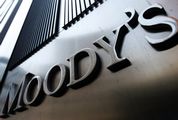FROM Sean Brodrick at Money and Markets, three pirate lessons for sailing through difficult financial waters:
It’s best to be an early investor. The first pirate to attack a Spanish treasure fleet was Jean Fleury, a privateer sanctioned by the king of France. In 1521, he bagged two lumbering treasure ships off the Azores. In those early days, nobody expected pirates in the middle of the Atlantic, so the treasure ships only had a few cannons and no chance against a heavily armed and determined buccaneer. Fleury became a hero in France, but his major investor, the Viscount of Dieppe, took an even bigger share of the loot … without even getting his feet wet.
Think big. By the time Henry Morgan came along, pirating was already a booming business. So he didn’t have the first-in advantage of Fleury. But by 1661, young Morgan was proving himself a master of battle tactics. He rode the waves of on-again, off-again wars between England and Spain to military success and wealth. Other pirates captured ships; Morgan captured whole cities — Gran Canada, Portobello, Maracaibo, even Panama City, which was the biggest, richest city in the New World at the time.
Good management is critical. England’s Queen Elizabeth I had a "thing" for pirates. Although it didn’t start with Sir Francis Drake, he was one of her favourites. He also happened to be brilliant, thoughtful and cool under fire … nor did Drake give up in the face of adversity. When his scheme to attack the city of Nombre de Dios on the isthmus of Panama was thwarted, he had his crew lay low for four months. When their wounds were healed, they ambushed a gold-laden mule train. Nobody expected a pirate to attack a mule train! But it made him wealthy.

Street Dogs
FROM Sean Brodrick at Money and Markets, three pirate lessons for sailing through difficult financial waters:
It’s best to be an early investor. The first pirate to attack a Spanish treasure fleet was Jean Fleury, a privateer sanctioned by the king of France. In 1521, he bagged two lumbering treasure ships off the Azores. In those early days, nobody expected pirates in the middle of the Atlantic, so the treasure ships only had a few cannons and no chance against a heavily armed and determined buccaneer. Fleury became a hero in France, but his major investor, the Viscount of Dieppe, took an even bigger share of the loot … without even getting his feet wet.
Think big. By the time Henry Morgan came along, pirating was already a booming business. So he didn’t have the first-in advantage of Fleury. But by 1661, young Morgan was proving himself a master of battle tactics. He rode the waves of on-again, off-again wars between England and Spain to military success and wealth. Other pirates captured ships; Morgan captured whole cities — Gran Canada, Portobello, Maracaibo, even Panama City, which was the biggest, richest city in the New World at the time.
Good management is critical. England’s Queen Elizabeth I had a "thing" for pirates. Although it didn’t start with Sir Francis Drake, he was one of her favourites. He also happened to be brilliant, thoughtful and cool under fire … nor did Drake give up in the face of adversity. When his scheme to attack the city of Nombre de Dios on the isthmus of Panama was thwarted, he had his crew lay low for four months. When their wounds were healed, they ambushed a gold-laden mule train. Nobody expected a pirate to attack a mule train! But it made him wealthy.





















Change: 0.96%
Change: 0.73%
Change: 2.82%
Change: -0.03%
Change: 2.23%
Data supplied by Profile Data
Change: 0.42%
Change: 1.06%
Change: 0.96%
Change: 0.00%
Change: 0.77%
Data supplied by Profile Data
Change: -3.21%
Change: -1.53%
Change: -2.18%
Change: -2.02%
Change: -1.86%
Data supplied by Profile Data
Change: -0.45%
Change: 0.51%
Change: 1.86%
Change: 1.90%
Change: 2.61%
Data supplied by Profile Data